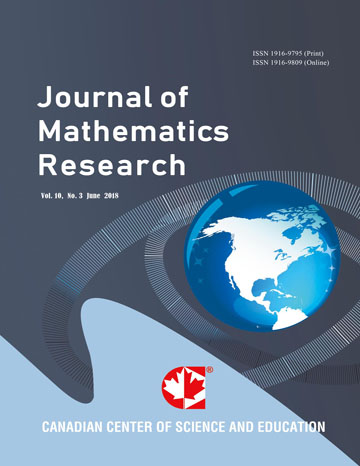Transmission Dynamics of Malaria in Ghana
- Francis Oduro
- Gabriel Okyere
- George Azu-Tungmah
Abstract
In this paper, a deterministic mathematical model to investigate the transmission dynamics of malaria in Ghana is formulated taking into account human and mosquito populations. The model consists of seven non-linear differential equations which describe the dynamics of malaria with 4 variables for humans and 3 variables for mosquitoes. The state vector for the model is $(S_h, E_h, I_h, R, S_m, E_m, I_m,)$ where $S_h$, $E_h$, $I_h$, $R$, $S_m$, $E_m$ and $I_m$ respectively represent populations of susceptible humans, exposed humans, infectious humans, recovered humans, susceptible mosquitoes, exposed mosquitoes and infectious mosquitoes. Stability analysis of the model is performed and we make use of the next generation method to derive the basic reproduction number $R_0$. A mathematical analysis of the dynamic behaviour indicates that the estimated model has a unique endemic equilibrium point and malaria will persist in Ghana. The basic reproduction number for Ghana is found to be $R_0=0.8939$. Further, both the disease-free and endemic equilibria are locally asymptotically stable. Numerical simulations indicate that reducing current biting rate of female Anopheles mosquitoes by 1/16 could assist Ghana to achieve malaria free status by the year 2037. If, in addition, the number of days it takes to recover from malaria infection were reduced to three 3 days malaria free status could be achieved by the year 2029.
 PDF
PDF
